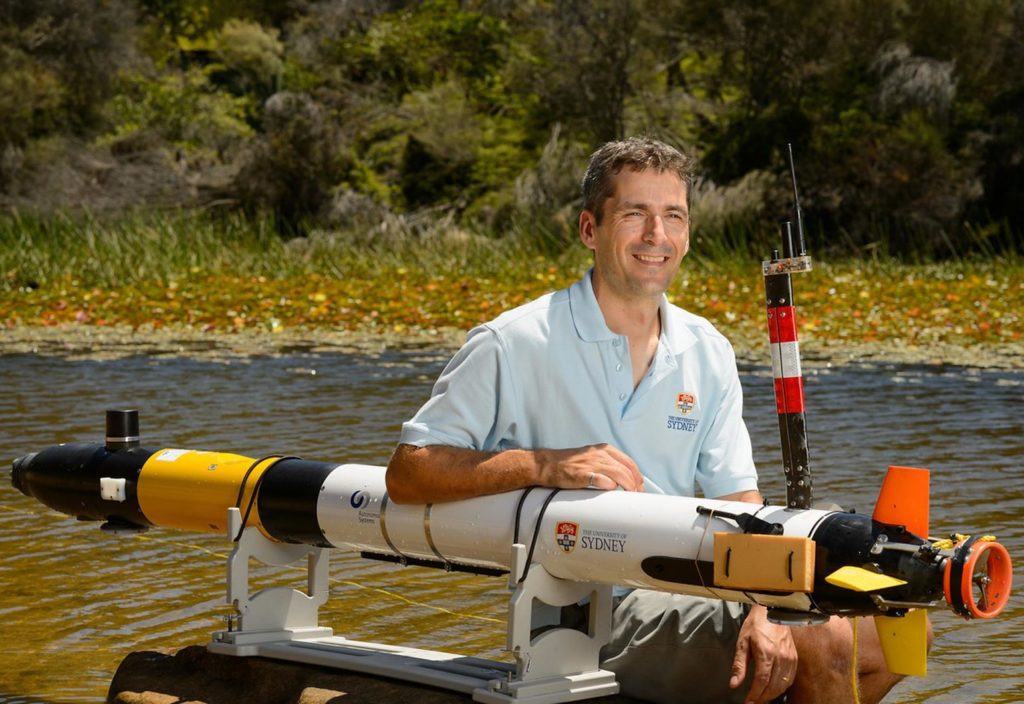For more than a decade, Professor Stefan Williams has been developing underwater robotic vehicles to track the health of our marine ecosystems. He caught up with create to discuss how new technology is helping.
Williams heads up the University of Sydney’s School of Aerospace, Mechatronic and Mechanical Engineering, and has recently been awarded the title of Distinguished Lecturer by the Institute of Electrical and Electronic Engineers (IEEE).
Since 2007, his team has been developing and operating autonomous underwater vehicles (AUVs) to collect data about reefs and other ocean environments as part of a Federally funded initiative called Australia’s Integrated Marine Observing System (IMOS).
“We work coral reefs in the north, and more temperate kelp reefs in the southern latitudes,” Williams said, adding that the objective of the IMOS program is to return annually or semi-annually to see how the seafloor changes over time.
The data collected has been valuable in understanding how rising ocean temperatures are affecting our coral reefs. Williams’ team have documented coral bleaching events on the west and east coasts of Australia, including significant damage sustained by the Great Barrier Reef in 2016 and 2017.
“We’ve been using a combination of robotic systems and diver-held imaging systems to document how some of these reefs are reacting to the bleaching events,” Williams said.
His team is also documenting the effects of tropical cyclones. Williams said another interesting finding is that the kinds of species found living on the reefs are changing. As the water warms, marine animals such as starfish and sea urchins are migrating south to colder climes.
On the international scene, Williams has collaborated with the University of Tokyo to study debris from the 2011 earthquake and tsunami that caused Fukushima’s nuclear disaster. He has also mapped areas around artificial deep-sea hydrothermal vent sites off Okinawa.
New tech adding value
Williams said emerging technology has helped his team glean better insights from their monitoring activities.
“There have been huge developments in the field of machine learning that have allowed us to really find patterns and understand what’s in the data,” he said.
This includes the ability to train algorithms to identify specific items in the surveying imagery, such as different species of coral and other marine plants and animals, as well as learning relationships between different types of data.
Imagery gathered by the AUVs’ high-resolution cameras is used to train machine learning algorithms to predict what kind of habitats are likely to be found in unexplored areas of the seafloor after they’ve been mapped from ships on the water’s surface.
“We’re able to extrapolate from what we can actually image to much wider areas of the seafloor,” he added.
Williams is in the early stages of using machine learning to train AUVs to make decisions while they are deployed, such as deciding to move to another area if they are seeing too much sand and not enough animals or coral.
Advances in battery technology have also been important. Williams said his robots are powered by lithium ion batteries and can operate for 10 or 12 hours. Other researchers have developed vehicles that can operate on a single charge for weeks or months.
Williams said his team is working on improving the independence of AUVs by incorporating the ability to transmit data via satellite while they are underway, and employing teams of robots to support each other.
“You might have a robotic boat that is supporting the underwater vehicle while it’s underway,” Williams said.
Exciting times
Williams is enthusiastic about the current level of interest in robotics – particularly in areas such as autonomous transport, agricultural automation and mining – and thinks that underwater applications have a lot of potential.
One of his students is working with NSW startup Blueprint Lab to build robotic arms for underwater use. This could expand the application of underwater robots from observation to more ‘hands-on’ tasks such as collecting samples or interacting with the environment.
“We’re seeing a lot of that kind of research in robotics more widely, and I think there are some really interesting challenges underwater,” Williams said.
Marine robots can also be used by industry for infrastructure inspections on facilities such as oil and gas platforms, dams and canals.
Abyss Solutions, a startup founded by University of Sydney engineering and science alumni, is using remotely operated underwater vehicles to provide infrastructure inspections and 3D modelling for clients in Australia and overseas.
“They use a lot of machine learning techniques to identify faults or issues from the data they’ve collected,” Williams said.
His students’ skills have been in demand not just in academia and underwater applications, but industries ranging from self-driving cars to finance and aerial surveying.
“There are a lot of opportunities that aren’t necessarily related to marine robotics,” Williams said.
